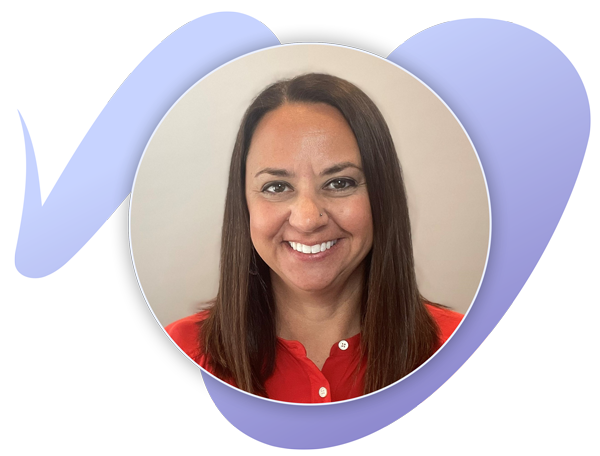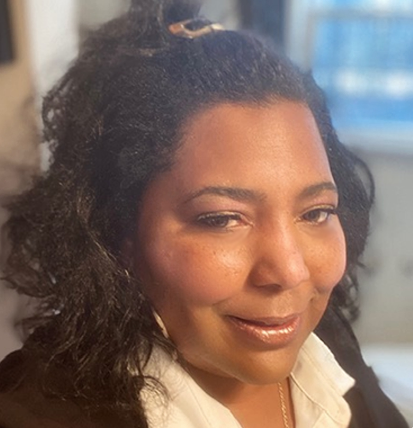March 28, 2023 3:43 pm
Getting Personal: Transforming the Educator-Curriculum Provider Relationship
What makes a relationship between districts and curriculum providers deepen into a true partnership with improved student outcomes? And what makes that partnership successful? Discover what three Imagine Learning customers and their Customer Success Managers say.
In education, the best relationships between districts and curriculum providers deepen into true partnerships — where there’s collaboration, give-and-take, and improved student outcomes.
But what makes that partnership truly successful? We talked with three districts and their Imagine Learning Customer Success Managers to see what makes their partnerships tick. Though every educator is from a different geographic location and plays a different role within the education world, the similarities between their partnerships were impossible to ignore.
What we discovered: both professional and personal trust is key to building partnerships that work.
After you’ve decided to use Imagine Learning, what happens next? (Besides amazing student learning breakthroughs!) A dedicated Customer Success Manager walks you through each phase of implementation: rostering, getting started, finding the right professional development for your team, and even analyzing your data and results.
Customer Success Manager Kristy and the Baltimore City School District (BCSD)
Communicative Partnerships
“Regular communication is the key to partner success,” said Kristy. “You already have a professional connection from working together. Meeting in person to make a personal connection, and talk about kids and grandkids, is so important.”

Kristy M.
Customer Success Manager, Imagine Learning
Michael from BCSD agreed: “I think you have to like people to want to work with them. The Imagine Learning team we work with shows us that they’re humans. It’s not robotic.”
Trusting Partnerships
“Partnership is exemplified in the relationship with Imagine Learning,” said Kerry from BCSD. “When we reach out, they’re responsive; communication is so key in this partnership. It shouldn’t feel like the partner is dominating and selling, but rather listening to us and coming up with solutions together.”
“The give-and-take is what makes this partnership unique,” said Kristy. “They’re a very data-driven district. The school has a long game, and this partner trusts the data. This is a factor that differentiates this partner from others: they trust you and they trust the numbers. They count on me to be correct.”
For an education partnership to work, customers can’t just trust the people with whom they work — they must also trust the product. Kerry from BCSD said, “We also see how much time and thought goes into creating the product. We can tell it’s not been thrown together quickly. We’ve never been able to see that with another group that we’ve worked with.”
Aligned Partnerships
“We looked for alignment in a partnership,” said Kerry from BCSD. “We needed a partnership aligned to our district initiatives, as well as easy-to-access and with implementation support. Working with a partner, we’ve been able to build and grow.”
One BCSD customer was shocked to hear that Kristy had other districts for customers because she’s so responsive and focused on their needs. She laughed, “It’s really flattering that they thought I worked only for them! But I have 70 other customers, too.” Michael from BCSD added, “Every day I’m emailing Kristy, saying, ‘Help!’”
Kristy vows, “I will get to know you, your goals, and your implementation. There are lots of options out there. I want them to feel like they have this valuable tool because someone is part of their team.”
When asked to describe the partnership with Imagine Learning in one word, Kerry from BCSD joked, “One word? We’re math people,” but quickly added, “Supportive.”
Colleague Michael added, “Considered.”

Mark C.
Customer Success Manager, Imagine Learning
Customer Success Manager Mark and Joanne, the Hope Center for Autism
Relational Partnerships
“Trust is important when you’re dealing with something as important as a child’s education,” said Mark. “And trust requires honesty and difficult conversations.”
Especially in an education partnership, trust is essential. Mark said, “Partnership is not transactional, but relational; we work toward shared goals for the students’ best interests. If a customer doesn’t make that leap and jump the transactional fence, then we’ll run into some obstacles.”
Mark adds, “I have some clients that don’t trust as easily, and because they don’t trust as much, they’re not getting the best service.”
Joanne said, “Usually I am that person who’s like, ‘Yeah, we got it. Let me be. I got it.’ But, Mark, you’ve been so helpful, and we’ve needed that. I don’t do this with anybody else.”
Personal Partnerships
“Hope Center has a lot of heart,” said Mark. “The people who work there have a lot of heart and they really are invested in their students’ wellbeing. And I could tell that right away, because everything mattered to them and was important.”
The work is personal to Joanne, but also to Mark, a former classroom educator. “I’ve always recognized, as a brick-and-mortar teacher, that students can get left behind, so the work that Joanne’s doing is phenomenal, and it really drives me.” He added, “As a customer success manager, I get to wake up and continue doing that great work with Imagine Learning because I’m able to see the impact.”
Mark said, “It’s not just a course, it’s about truly transforming somebody’s life. That just touches me.”
Collaborative Partnerships
For Mark, realizing that the Hope Center helps students who have never succeeded in a traditional brick-and-mortar setting was pivotal. He said, “We’ve had to step out of the box and had to really redesign what the box looks like for those students.”
Joanne said, “In all honesty, if we didn’t have that flexibility, I don’t think we would have been successful. We’ve needed a lot of support to get through to where we are at this point now. We are a small school, and we have more than 50 people on staff for 86 kids… We need a lot of adjustment, a lot of understanding, and what we adjust… may be a little bit different next year.”
Collaborating with the larger Imagine Learning team to pool knowledge and experience truly gives partners like the Hope Center the best solutions for their needs. Mark says, “The benefit to the partner is that they can get exactly what they want and need — even if it’s offbeat from other, typical customer needs.”
How would Joanne describe the partnership with Imagine Learning? Without missing a beat: “Collaborative.”
Customer Success Manager Tiffany and Dr. Randy, Director of Education Management and Networks in Michigan
Trusting Partnerships
“Partnership equals team,” said Tiffany. Her background as an athletic coach shines through in her approach to her customers’ needs: “We’re on the same team and we want to win. What does your win look like?”

Tiffany G.
Customer Success Manager, Imagine Learning
Tiffany added, “I need to be able to actually meet my district administrators. I need to know that they’re really telling me what they think and feel and need.”
Dr. Randy said, “Trust is important because we’re not just buying software. I believe that we’re also buying expertise. I’m asking the partner to boost and support us.”
Tiffany said, “Dr. Randy trusts us. He believes in the partnership.”
Responsive Partnerships
Dr. Randy said, “Partnership is removing the silos and bringing everything together. I know that when we need them, they’re there. I need people who are responsive to our needs, not just invoicing me every six months. The vendor/vendee relationship doesn’t always lend itself to a partnership, but we’ve felt heard.”
Even when things don’t always go smoothly, he added, “True partners can demonstrate that problems will get fixed and solved.”
Tiffany leverages her relationships within Imagine Learning to get her customers the best answers possible when they want to dive deeper into certain products, even if it’s not her area of expertise.
For her customers, she said, “What is it that [customers] need to see so that they feel like they’ve had their return on their investment? That’s really what it comes down to. It’s finding out what it is that our customers really want.”
Personal Partnerships
“When I wake up in the morning, and I’m turning my computer on, and I’m feeling stoked — that has everything to do with people that I work with internally. But also, I have some really rad customers,” said Tiffany. “I’ve got some really, really wonderful districts — people who are wonderful humans who I get to work with.
About Dr. Randy, Tiffany added, “This is a man who will do anything for his staff, to make sure they’re supported. I would work for him in a heartbeat.”
Dr. Randy said, “In a word, I’d describe the relationship with Imagine Learning as ‘fulfilling.’” From a district’s perspective, he added, “We could get the software anywhere. I need the people.”





